Montreal, a vibrant hub of Quebec’s cultural scene, welcomed us after our four-day adventure pedaling the P’tit Train du Nord across Quebec’s Laurentian region, from Mont-Laurier to Saint-Jérôme. Here’s an overview of some of the sites and activities from our trip.
Day One:
Upon arriving in Montreal, we spent a couple of hours exploring the Little Italy and Mile End neighborhoods. We visited places such as Marché Jean-Talon, the Drawn & Quarterly bookshop, and the original St. Viateur Bagel store.
Marché Jean-Talon, located in Montreal’s Little Italy district, is one of the largest and oldest public markets in North America. Established in 1933, it offers a vibrant array of fresh produce, meats, cheeses, and specialty foods from local farmers and vendors. The market is a cultural hub, bustling with activity and embodying the diverse culinary heritage of Montreal. Open year-round, Marché Jean-Talon is a favorite destination for both locals and tourists seeking high-quality ingredients and an authentic market experience.
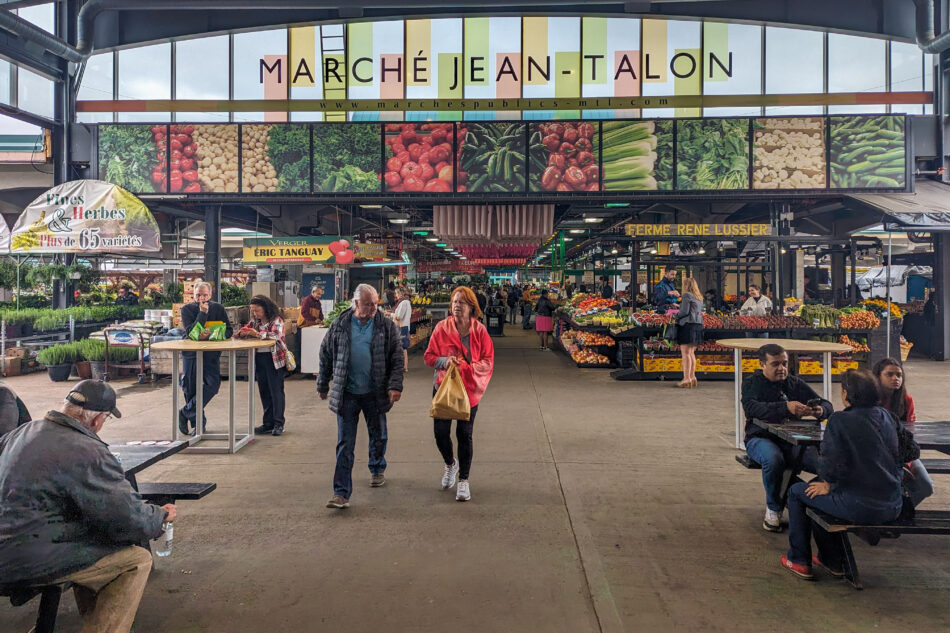
After lunch in a café near Marché Jean-Talon, we walked to Librairie Drawn & Quarterly and purchased several books. I’ve been a huge fan of D&Q’s publications for over 30 years, so I was excited to visit their bookstore. I bought Adrian Tomine’s New York Drawings and Dirty Plotte: The Complete Julie Doucet.
Our next stop was St. Viateur Bagel, a renowned bagel shop in Montreal, celebrated for its iconic hand-rolled, wood-fired bagels. Established in 1957, it has become a beloved institution, famous for its uniquely chewy and slightly sweet bagels, made using traditional methods. Open 24/7, St. Viateur offers a variety of bagels, often enjoyed fresh out of the oven. The shop is a staple in Montreal’s Mile End neighborhood. Indeed, the bagels truly live up to their reputation! Just remember to bring cash—they do not accept credit cards.

Day Two:
Our second day in Montreal was filled with fun and exploration. We walked approximately 2.6 miles from our hotel room to Mont Royal. Mont Royal, a small mountain in the heart of Montreal, is part of the larger Mount Royal Park, designed by American landscape architect Frederick Law Olmsted, who also co-designed New York City’s Central Park. The mountain, which rises to about 233 meters (764 feet), is a prominent landmark offering panoramic views of the city from the Kondiaronk Belvedere, named after the notable Huron-Wendat chief Kondiaronk who played a significant role in the Great Peace of Montreal in 1701.

After descending from Mont Royal, we hiked across town to Fondation PHI to view the exhibitions on display. The exhibitions included Rajni Perera and Marigold Santos: Efflorescence/The Way We Wake and Sonia Boyce: FEELING HER WAY. Founded in 2007, Foundation PHI aims to make contemporary art accessible to everyone through impactful public experiences.


Later that day, we visited PHI Centre to experience two installations. The first was Habitat Sonore: Playlist — Music That Moves Montreal, an immersive sound experience utilizing Dolby Atmos and presented in a small, dark room that accommodates up to ten people. The second installation was Richard Mosse: Broken Spectre, which was both powerful and moving.


Both exhibitions at Phi were exciting and thought-provoking. After visiting, we moved over to the Notre-Dame Basilica for the AURA Experience, designed and produced by the Montreal-based Moment Factory. The 25-minute light show was divided into three acts:
- Act I: The Birth of Light
- Act II: The Obstacles
- Act III: The Open Sky
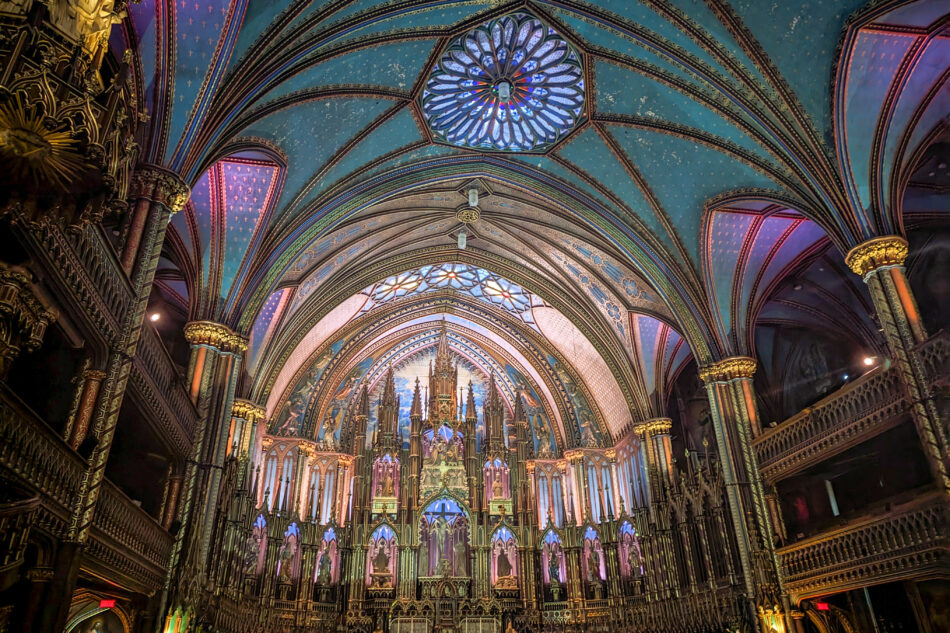

Day Three:
Our day began with breakfast at Olive et Gourmando Boutique, a celebrated breakfast and brunch restaurant in Old Montreal near PHI Centre. After breakfast, we rode the historic Lachine Canal, a National Historic Site, from end-to-end beginning in Old Port, Vieux-Montreal. The trail was easily accessible via the bike path along the port, just two short blocks from our hotel. It was incredibly scenic and surprisingly crowded for a Thursday morning. In 2009, the Lachine Canal bike path placed third on Time Magazine’s list of the Top 10 urban bike paths in the world.
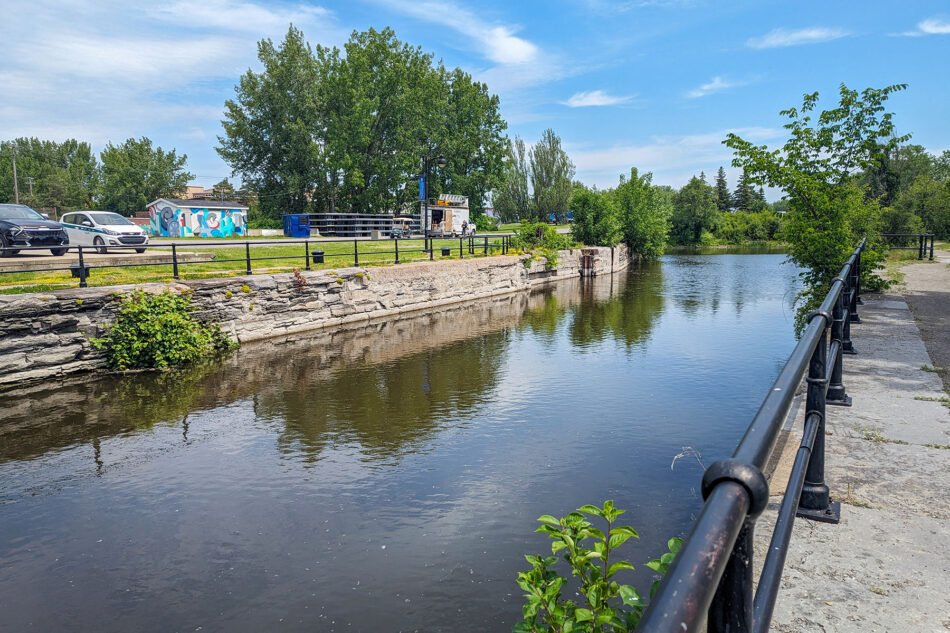
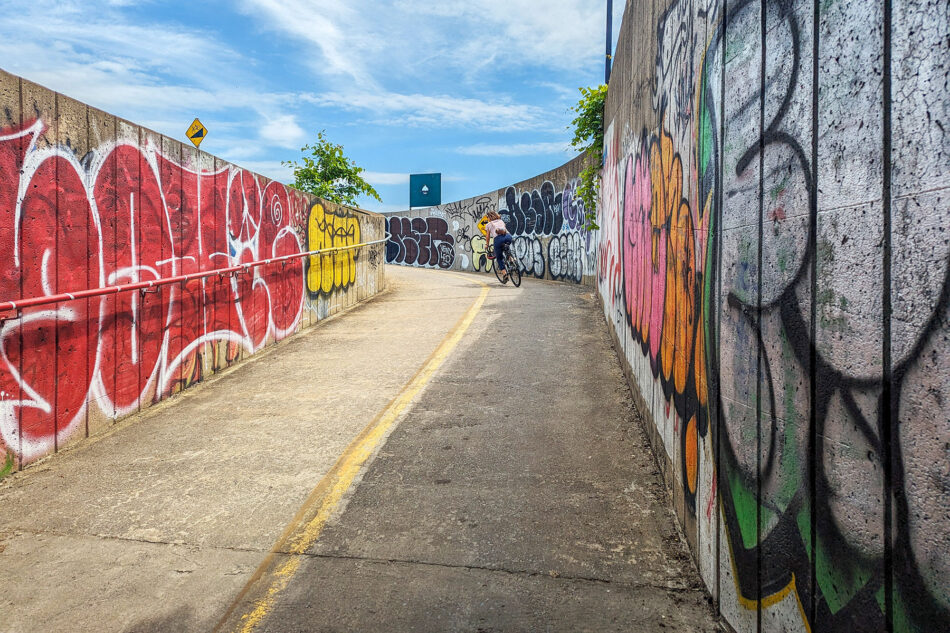
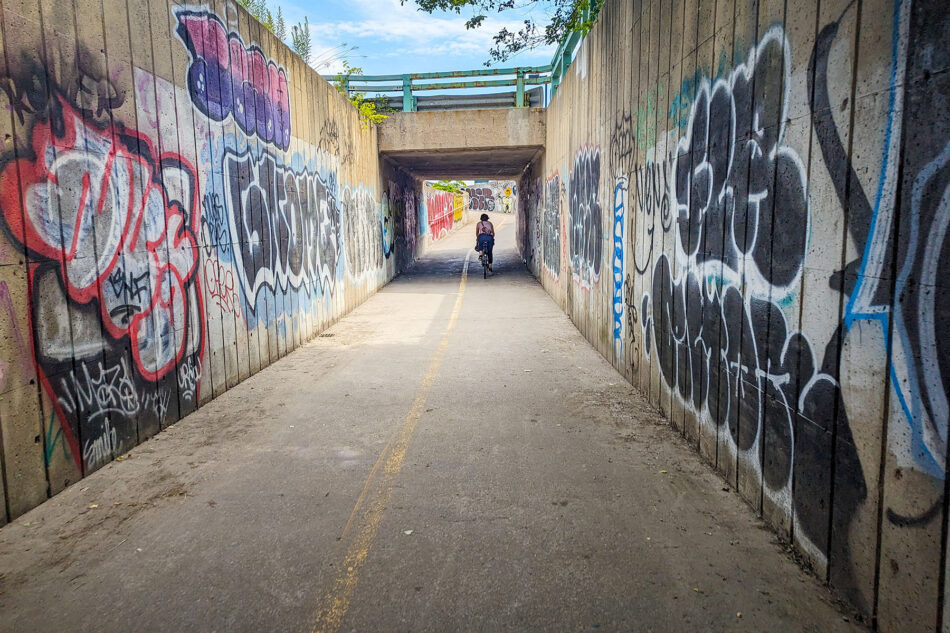
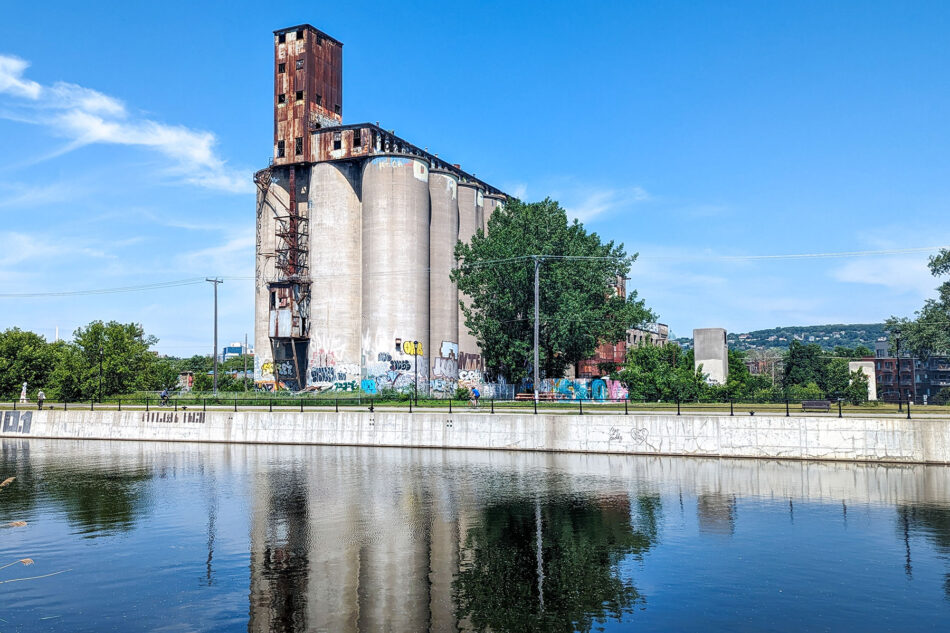
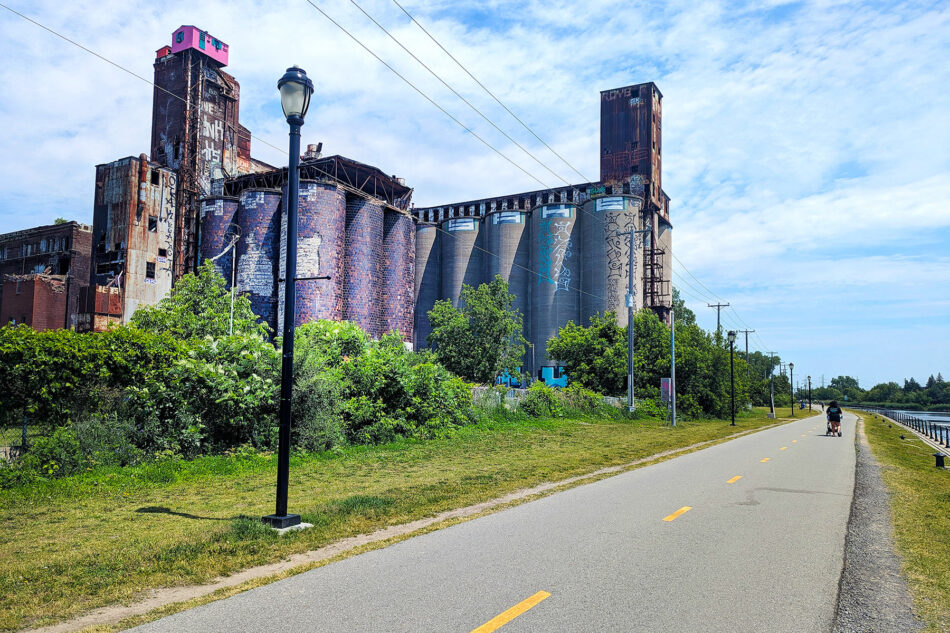
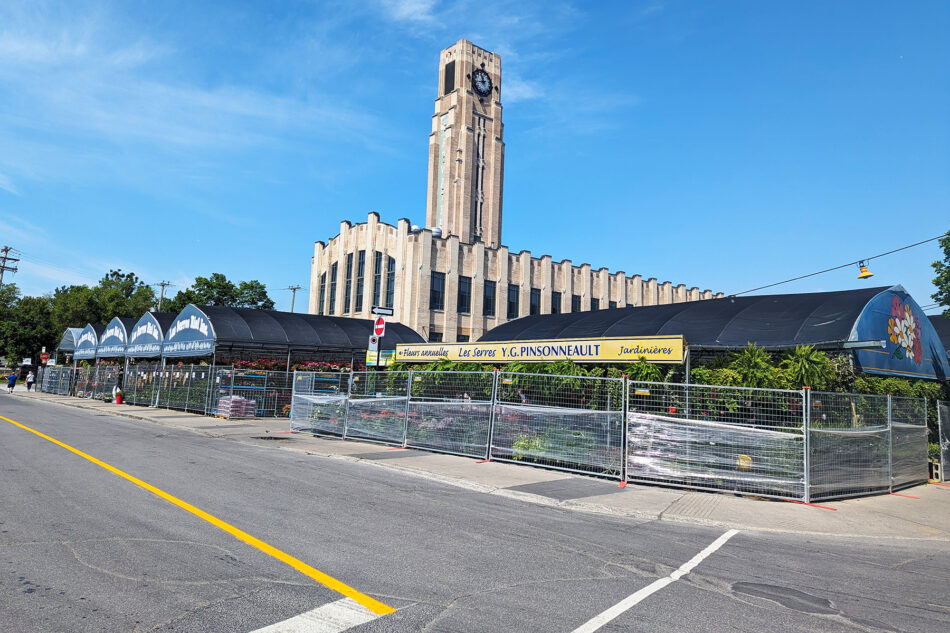
We also made a stop at Marche Atwater, right off the trail, for lunch. Opened in 1933, the market is housed in an Art Deco building and named after Edwin Atwater, a 19th-century businessman and city councillor. The market is renowned for its wide variety of fresh produce, meats, cheeses, baked goods, and other specialty foods. Atwater Market also features several delicatessens, butchers, and fishmongers, offering high-quality products. We enjoyed lunch at Premiere Moisson, an artisanal bakery.
During the afternoon, we spent about three hours at the Bota Bota spa here in Montreal. Bota Bota is a floating spa situated on a converted ferryboat docked in the Old Port of Montreal. It offers a unique spa experience with stunning views of the St. Lawrence River and the city skyline. The spa features a variety of wellness services, including water circuits, saunas, steam baths, massage therapy, and yoga classes. Its tranquil ambiance and innovative setting make it a popular destination for relaxation and rejuvenation in Montreal. We each purchased the water circuit, which was sublime!

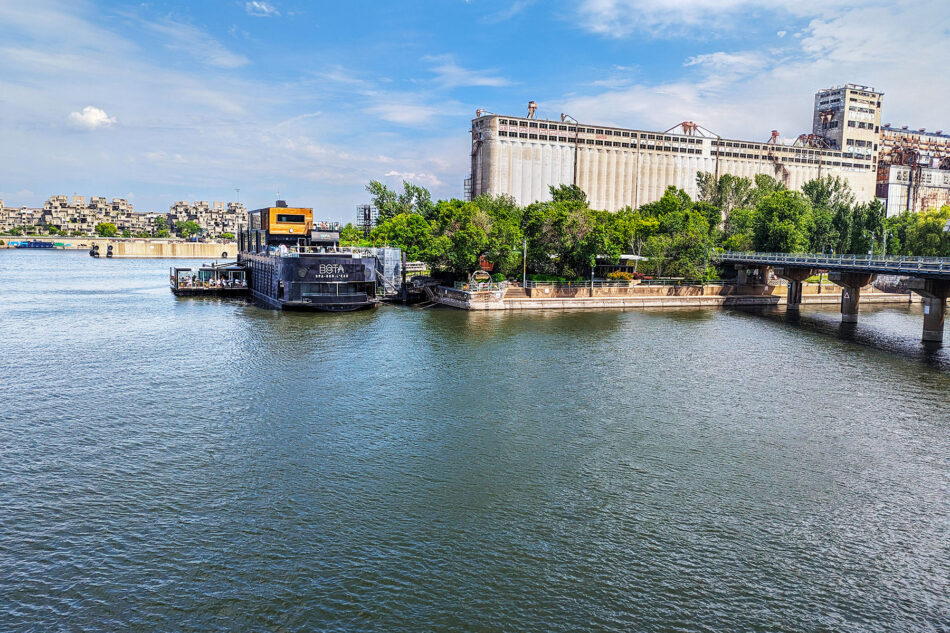
Day Four:
Our final day started with an exploration of the murals along Saint Laurent Boulevard during the MURAL Urban Art Festival. It was a 2-plus mile walk to view the murals, and then we made a detour to La Banquise to sample their poutine. La Banquise, a renowned restaurant famous for its wide variety of poutine dishes, was founded in 1968 as a simple ice cream parlor by Pierre Barsalou. Now, it serves more than 30 varieties of poutine. We enjoyed hot dogs with the classic poutine.
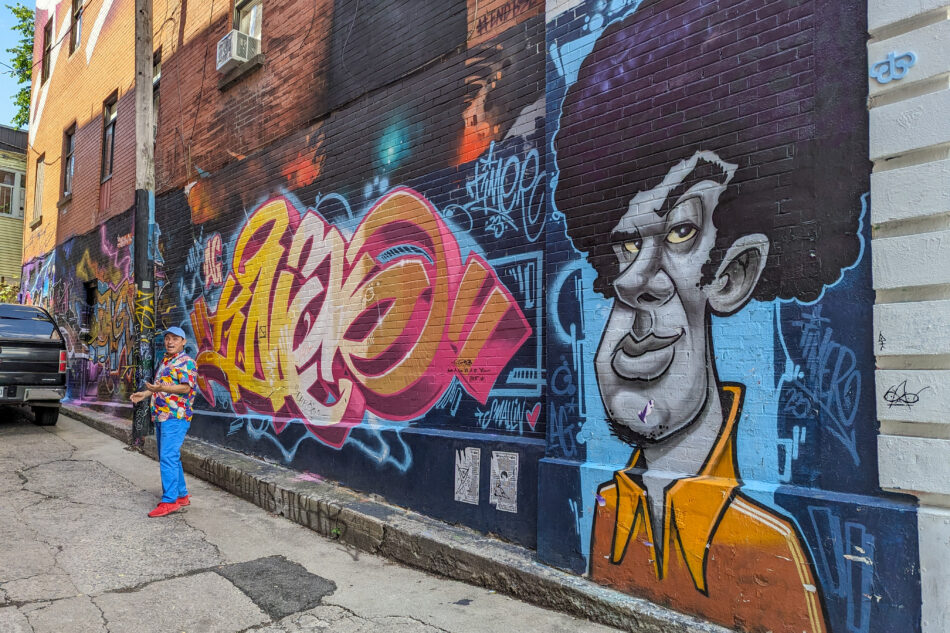
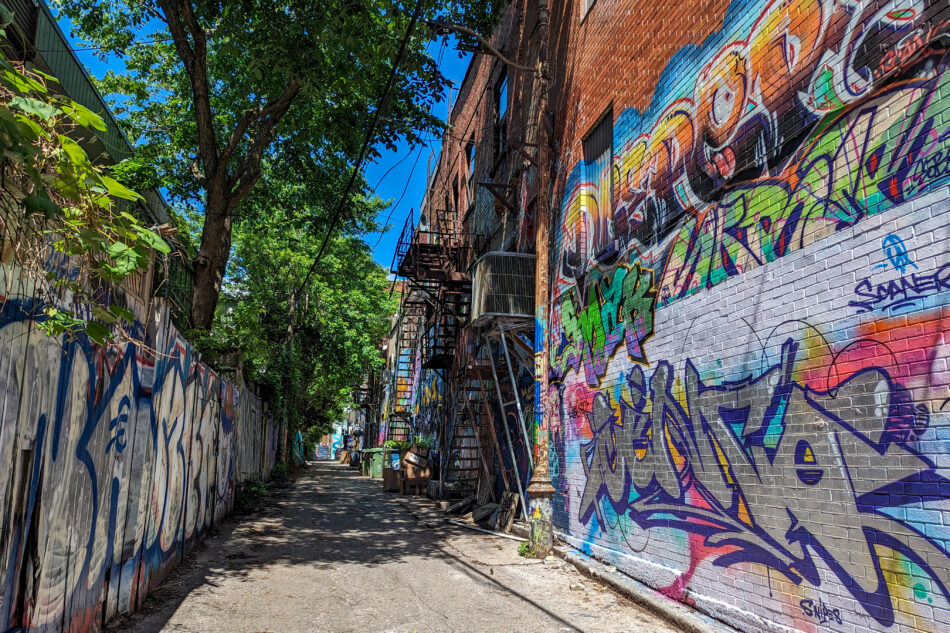

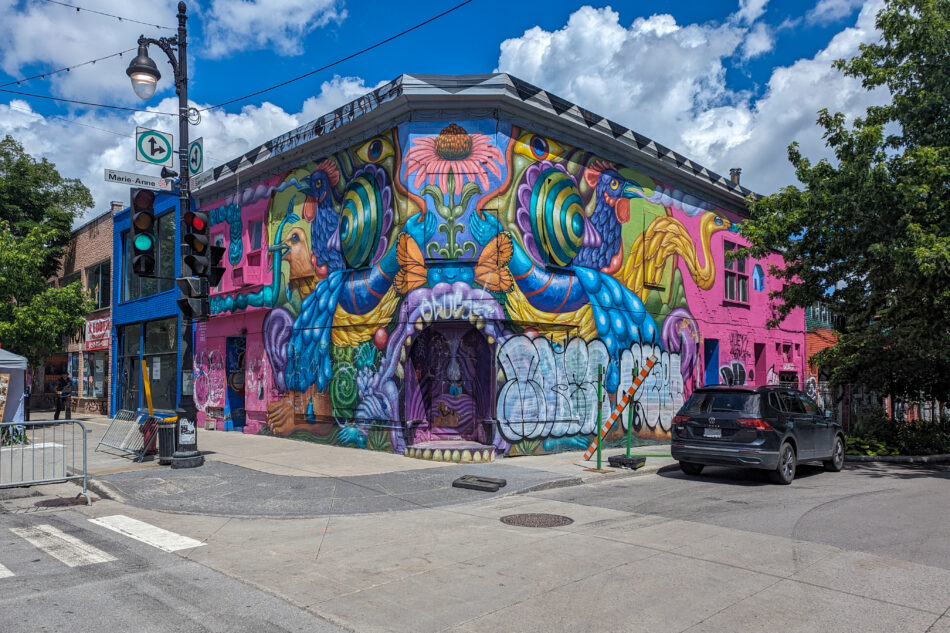
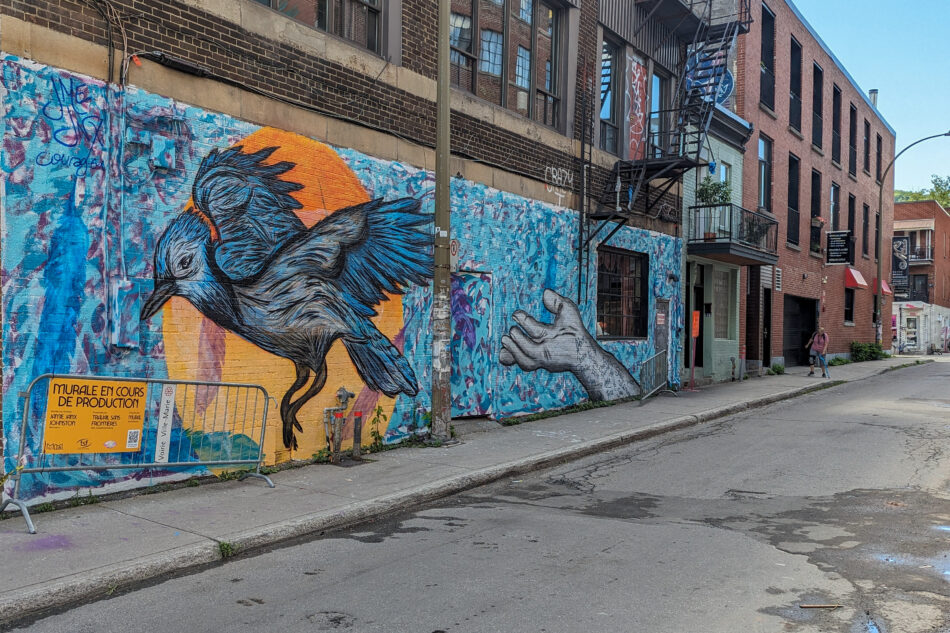
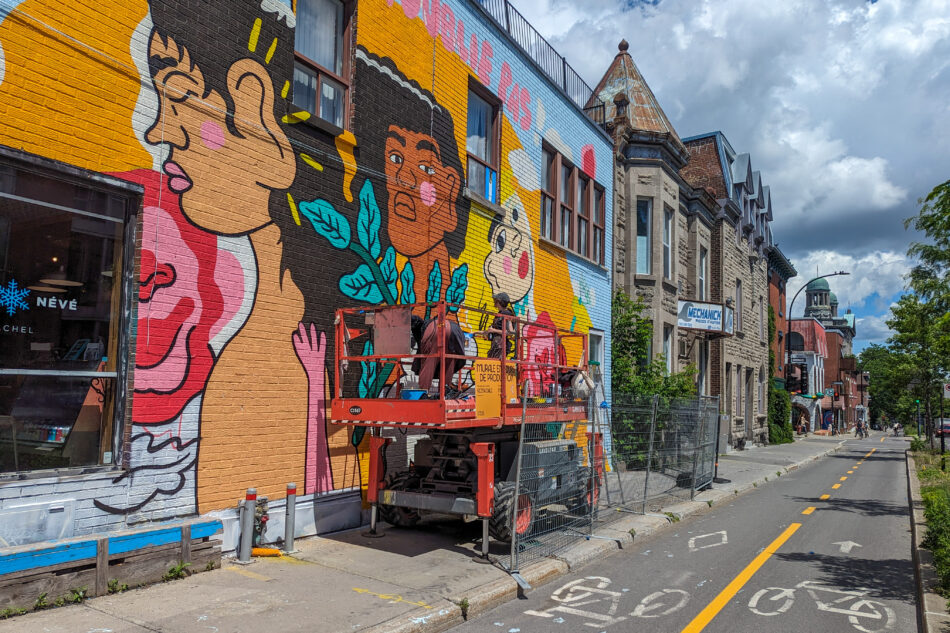
During the afternoon, we took the ferry from Old Montreal across the St. Lawrence River to St. Helen’s Island. We explored the Biosphere, designed by Buckminster Fuller for Expo 67, and the Biosphere Environment Museum for about an hour. Afterwards, we walked across Parc Jean-Drapeau to attend (Off) Piknic Électronik. Montreal’s Piknic Électronik is a popular electronic music festival that occurs every Sunday during the summer at Parc Jean-Drapeau. The event offers a unique, relaxed environment where attendees can enjoy dance music in a scenic outdoor setting, often accompanied by views of the city skyline.

Piknic Électronik Montreal not only stands as a beacon of electronic music within the city but has also extended its influence globally. Since its inception in 2003, the event has expanded to international cities such as Barcelona, Melbourne, and Santiago. Each of these locations hosts its own version of Piknic Électronik, adapting the unique vibe and community-focused ethos of the original Montreal series to local cultures and tastes.
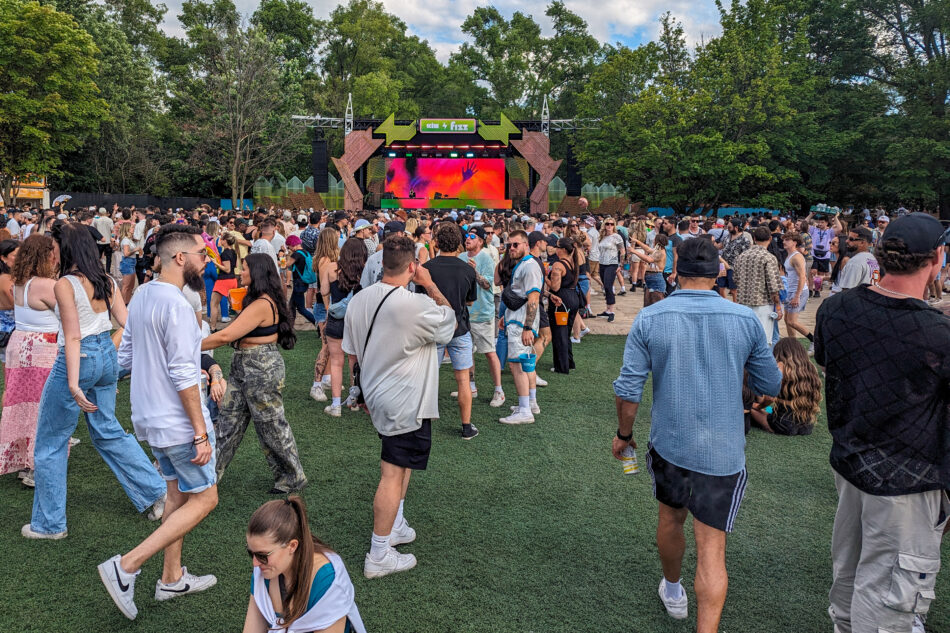
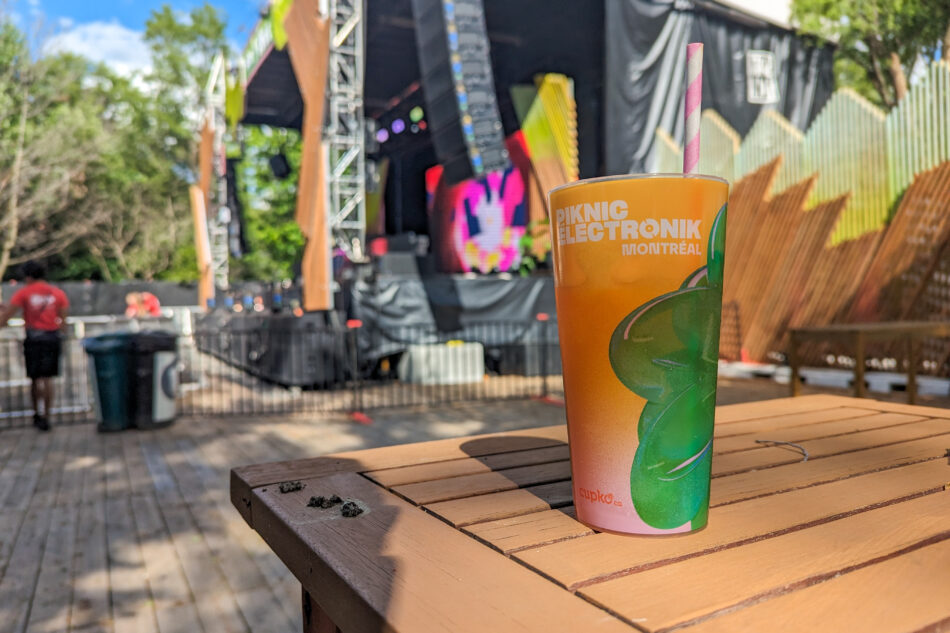
The Off Piknic program extends the experience beyond the regular summer schedule. It features special events and performances that usually take place in different locations around the city. These events aim to bring the same vibrant, inclusive atmosphere as the main Piknic Électronik, but often with a twist or a special thematic focus, catering to a wider range of electronic music tastes and cultural expressions.
The following morning, we departed Montreal and began our journey home. However, before leaving the city, we visited Fairmount Bagels. Founded in 1919 by Isadore Shlafman, a Jewish immigrant, Fairmount Bagel is a historic and iconic bakery. Renowned for its hand-rolled, boiled, and wood-fired bagels, Fairmount offers a unique Montreal-style bagel known for its slightly sweet taste and denser texture compared to its New York counterpart. The bakery operates 24/7, providing a variety of bagel flavors and maintaining traditional baking methods. This makes it a beloved institution in the city and a must-visit spot for both locals and tourists. There is often a debate over the best bagels in Montreal, with St. Viateur and Fairmount being the top contenders. I couldn’t tell much of a difference between the two—both are outstanding and better than any bagel I’ve eaten in the United States.
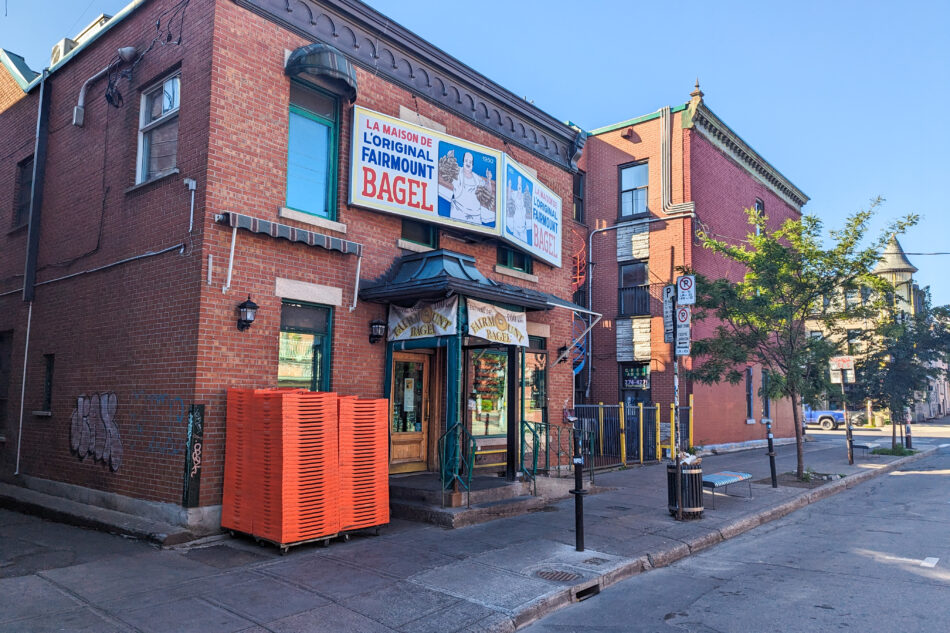
Reflecting on our time in Montreal, it’s clear that the city offers a unique tapestry of culture, cuisine, and history that is vividly alive in its streets and neighborhoods. From the serene views atop Mont Royal to the aromatic bakeries of Little Italy and Mile End, each moment was a delightful discovery. Montreal not only preserved its historical charm but also embraced the vibrant, dynamic energy of contemporary life. As we headed home, we carried with us not just a collection of Montreal’s famous bagels but also lasting memories of a city that truly captivates the heart and the senses.